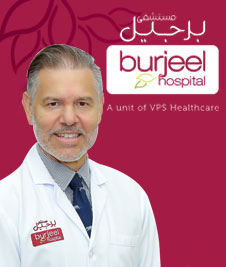WHAT IS FLATBACK SYNDROME?
The flat back syndrome also called fixed sagittal imbalance is a condition in which the normal curve found at the lower portion of the back is reduced and loses some of its curvatures.
The flatback syndrome is mainly characterized by a head and neck that is pushed forward resulting in strain and chronic pain in the neck, upper back, and shoulders, making it difficult to stand for a long period. Complications can lead to flatback syndrome after scoliosis surgery, which involves the spine.
The normal spine involves two curves—one at the cervical region or at the neck and one at the lumbar region or the lower back—that acts as a balance by aiding in the maintenance of the center of gravity and in allowing room for movement.
The curve at the cervical region curves towards the neck while the lumbar region curves inwards towards the pelvis. This inward curvature is called lordosis and when this lordosis is lost, the gravity placement of the body is affected.
When these curve at the spine is affected, your balance is also affected and your standing posture is affected. When standing, you may have the feeling of falling forward and may need to flex your hips and knees in other to help adjust your pelvis and straighten your gait.
For people with flat back syndrome, the center of mass is displaced and pushed forward while the axis lies more than 5mm from vertical hence making walking and other activities quite difficult to carry out.
People often need a walking support stick for the flatback syndrome to help when walking as they tend to swoop forward when walking since their weight is not on their pelvis and legs.
RISK FACTORS OF FLATBACK SYNDROME
People who are liable to develop flat back syndrome include:
- People with a congenital abnormality.
- People who undergo laminectomy procedures or scoliosis surgery.
- People with a degenerative disease.
FLATBACK SYNDROME DIAGNOSIS
When diagnosing flatback syndrome, your doctor will examine your medical history to ascertain when the deformity started, or even it was a result of surgery complications. A physical examination involving a musculoskeletal examination and a neurologic examination will also be carried out. Your doctor will recommend a CT scan or X-ray for flatback syndrome scanning test to examine walking gait, which will provide an image of your spine and other bones and tissues.
A magnetic resonance imaging (MRI) test will be carried out to produce detailed images of the body.
FLATBACK SYNDROME TREATMENT
Your doctor may recommend exercise postures for your flatback syndrome. Conservative treatment usually involves exercise and physical therapy aims at improving the body structure.
Flatback syndrome exercises use a strategy of reversing the pattern of the muscle imbalance that aids in keeping the lower back flat and also stretching and strengthening these muscles. These exercises involve hamstring and abdominal stretches and the abdominal plays a vital role.
Examples of flatback syndrome exercise include:
- Planking
- Side-lying leg raises
- Chest stretches
- Pull-ups
- A gentle but sustained hamstring stretch held for about 30 seconds at a time could help improve your lumbar spine alignment.
Other exercises could be recommended by your physiotherapist which you could practice once or twice daily.
Pain medications may be administered to ease the chronic pain in the back.
When the conservative treatment cannot work and provide relief, and the structural problem is a result of lack of curvature, in such extreme cases, surgery for flatback syndrome may be recommended.
Surgery for flatback syndrome includes:
- Polysegmental wedge osteotomy.
- Medical subtraction osteotomy.
- Posterior vertebral column resection.
The surgery aims to give relief and add curvature to the lower back
FLATBACK SYNDROME SURGERY COST
Flatback syndrome surgery in average countries is within the range of $14000 and $26000.
FLATBACK SYNDROME RECOVERY
After the surgery, you need to keep doing exercises that could strengthen the spine. Recovery may take several weeks.
You will need to sit with chairs that have arms to help your posture and you have to take care not to twist your spine. You will need to take regular walks
Symptoms
FLATBACK SYNDROME SYMPTOMS
The symptoms of the flatback syndrome include:
- Difficulty standing upright.
- Chronic pain in the back because of continued contraction of the back muscles while standing.
- Difficulty in moving properly.
- A sensation of falling forward.
- Easily tired.
- Stooping at the end of the day.
Causes
WHAT CAUSES FLAT BACK SYNDROME?
The flatback syndrome can be caused by some factors which include:
- Congenital abnormalities.
- Inflammation of the arthritis of the spine.
- Degeneration of the spine.
- Compression fractures of the vertebrate or any trauma involving the spine.
- Complications of surgery such as laminectomy or scoliosis surgery.
- Implantation of devices to help correct scoliosis could also cause the flatback syndrome.
FAQ
Is flat back syndrome a disability?
The flatback syndrome can be considered a disability as it affects your everyday life in a very significant way by affecting your posture, gait and causes so much pain in the back.
Can you fix flatback syndrome?
The flatback syndrome can be treated and fix. The treatment involves both conventional and surgical treatment methods. Such conventional treatment includes exercises involving the hamstring and abdominal muscles, etc
What medication should I take for flatback syndrome?
Medication such as pain relievers may be recommended by your doctor in other the ease the chronic pains in your back. You could also take supplements such as vitamin D and another supplement
How can I fix my lumbar spine straightening?
You can help your lumbar spine through daily exercises, weight loss, etc.
Does lying on the floor straighten the back?
Sleeping on a hard surface could help align and straighten the neck and spine.



















































































































































































